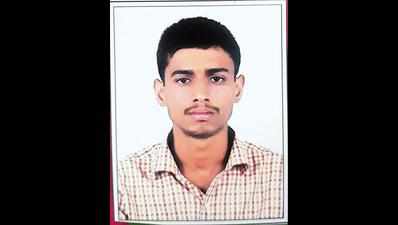- News
- City News
- vadodara News
- Longest prime number places MSU computer engg among top discoverers
Trending
This story is from September 13, 2021
Longest prime number places MSU computer engg among top discoverers

Vadodara: A computer engineering graduate from M S University’s Faculty of Technology and Engineering (FTE) has become the second person from the country to discover one of the longest probable prime (PRP) number.
Jainam Shah, a BE (computer science) has discovered a more than 50,000 digits long PRP number. Based on the number of PRPs, Jainam and his project partner Tapashree Trivedi are ranked among top 150 discoverers globally.
A PRP or a probable prime is a number whose primality can neither be proved nor disproved by anybody.“It is only up to certain smaller digits that you can find out whether the number is a prime number or not. If there are larger digits, the task becomes difficult. Such numbers are considered as PRP,” said Dr Vishwas Raval, who guided the students in the discovery.
“Prime numbers are mainly used in encrypting data before they are transmitted through IT networks. If the prime number is long enough, it becomes difficult for hackers to crack it and this provides more security for data transmission,” said Raval, explaining the importance of this discovery in the world of computer science
“I used super computer Param Shawak to find this out and I used data parallelism to find PRP in less time,” he added.
“If the same process is done on a personal computer, it may take nearly a month and six days. On a supercomputer, it requires a maximum of six days. But through data parallelism on the super computer, I could do it in only eight hours,” said Jainam, who verified the number using PFGW and PERL softwares.
According to Henri & Renaud Lifchitz’s PRP top record, which maintains record of probable primes discovered globally, the probable prime discovered by Jainam is ranked 9,340 in terms of number of digits as on August 18.
“After a certain digit, it is challenging to find a probable prime number. It has been done in limited time by our student using the supercomputer facility that has been provided to us by GUJCOST. He is a wizard,” said head of department professor Apurva Shah.
Jainam Shah, a BE (computer science) has discovered a more than 50,000 digits long PRP number. Based on the number of PRPs, Jainam and his project partner Tapashree Trivedi are ranked among top 150 discoverers globally.
A PRP or a probable prime is a number whose primality can neither be proved nor disproved by anybody.“It is only up to certain smaller digits that you can find out whether the number is a prime number or not. If there are larger digits, the task becomes difficult. Such numbers are considered as PRP,” said Dr Vishwas Raval, who guided the students in the discovery.
“Prime numbers are mainly used in encrypting data before they are transmitted through IT networks. If the prime number is long enough, it becomes difficult for hackers to crack it and this provides more security for data transmission,” said Raval, explaining the importance of this discovery in the world of computer science
“I got PRP at 1,54,951 iterations. This probable prime is 79,209 digits long,” he said
“I used super computer Param Shawak to find this out and I used data parallelism to find PRP in less time,” he added.
“If the same process is done on a personal computer, it may take nearly a month and six days. On a supercomputer, it requires a maximum of six days. But through data parallelism on the super computer, I could do it in only eight hours,” said Jainam, who verified the number using PFGW and PERL softwares.
According to Henri & Renaud Lifchitz’s PRP top record, which maintains record of probable primes discovered globally, the probable prime discovered by Jainam is ranked 9,340 in terms of number of digits as on August 18.
“After a certain digit, it is challenging to find a probable prime number. It has been done in limited time by our student using the supercomputer facility that has been provided to us by GUJCOST. He is a wizard,” said head of department professor Apurva Shah.
End of Article
FOLLOW US ON SOCIAL MEDIA











